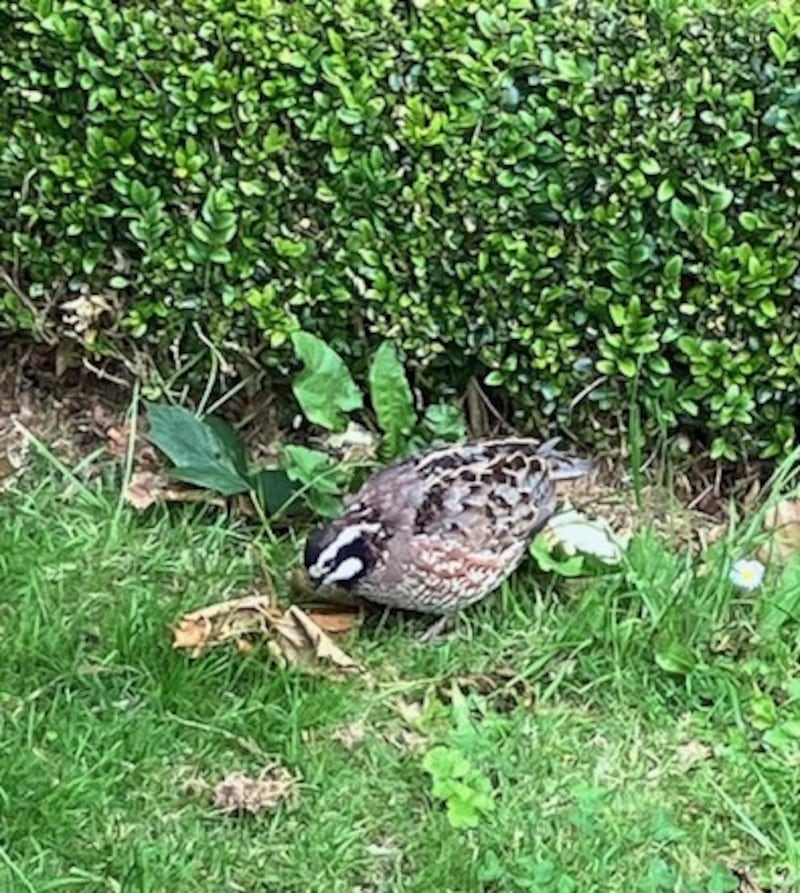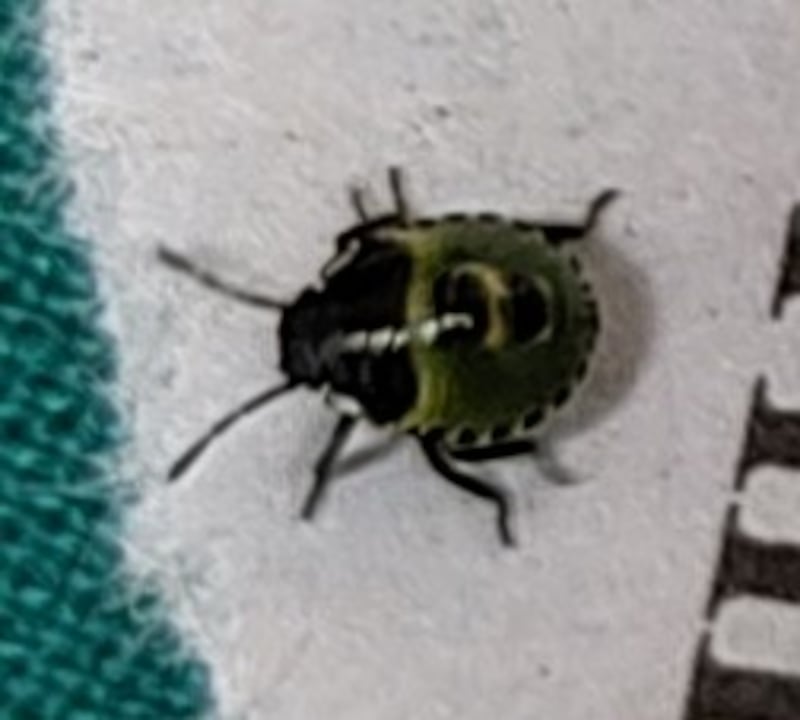This insect clung to the windscreen of my car for more than a kilometre as I drove to the supermarket, flying off after I stopped. It was quite small, and the red eyes were only obvious in the enlarged photograph. – Catherine Hand, Dublin
Yes, great detail can be observed when magnifying an in-focus image taken with the mobile phone. This is a hoverfly (Syrphus vitripennis), which has no common English name. It is distinguishable from S. ribesii by having a having a black femur on the back legs as opposed to their being yellow all over. It is actually quite tiny, about 10mm long, so well done on the good photograph. This is an excellent insect to have in your garden as its larvae are active predators of aphids. So maybe you should go back to the supermarket and give it a lift home again.

I live just outside of Mullingar, quite close to the shore of Lough Ennell. A number of unusual objects have begun to appear in the lakeshore reed beds. They are completely unlike anything one would find in nature and are obviously man-made – unless the local waterfowl have developed advanced high-security, elevated, post-mounted nest-building techniques, using wire cutters and chicken wire. What are these woven hay, sausage roll- like structures for, and why are they there? – Mark O’Donohoe, Co Westmeath
They are tubes to help keep nesting ducks safe from predation and from livestock trampling. They’re not made by the ducks themselves, even the super smart Mullingar ones, but possibly provided by hunters, to increase their breeding success. Mallard nests are often destroyed before the eggs have had the chance to hatch; in some cases, the success rates from ground nests can be as low as 15 per cent. When used properly, these tubes can boost fledgling success to more than 90 per cent.
RM Block

We saw this bird outside my house recently. It ambled into the bushes. What is it? – Tom Walsh, Ballinteer, Co Dublin
Unlikely as it may seem, this is a northern bobwhite, a species of quail native to Mexico and the eastern US. It has been seen by others as well in the Dundrum area. There is no way it flew here from Ameria so it must have escaped into the wild from a collection of exotic fowl or, worse, been deliberately introduced. Hopefully there is only one on the loose so it won’t become established invasive species.

I know this is absolutely tiny, but I never saw one before. I found it in my back garden in Greystones. – Jane Jackson, Co Wicklow.
It is the second instar stage of the green shield bug. This has hatched from an egg laid by the female, which overwintered as an adult. It will moult five times and each instar stage looks different from the earlier one. It will finally reach adult stage in late August and survive until the following July. It common enough in gardens, hedges and parks. The nymphs feed on the leaves of hawthorn and bramble.

These caterpillars were on my redcurrant bush but were also on the gooseberry and had eaten a huge amount of each leaf. I tried looking up images of gooseberry sawfly and cabbage white but they seemed to be almost interchangeable. – Mervyn Taylor, Dublin
They are gooseberry sawflies. Sawfly caterpillars have at least six pairs of legs and love to eat gooseberry leaves and currant leaves. Cabbage white caterpillars, on the other hand, never have more than five pairs of legs and feed on brassicas such as cabbages and nasturtiums. They wouldn’t be seen dead on gooseberry leaves – it’s not their food plant.
Please submit your nature query, observation, or photo, with a location, via irishtimes.com/eyeonnature




















